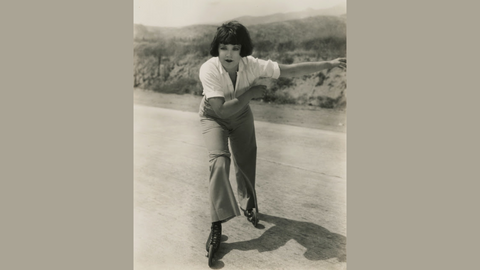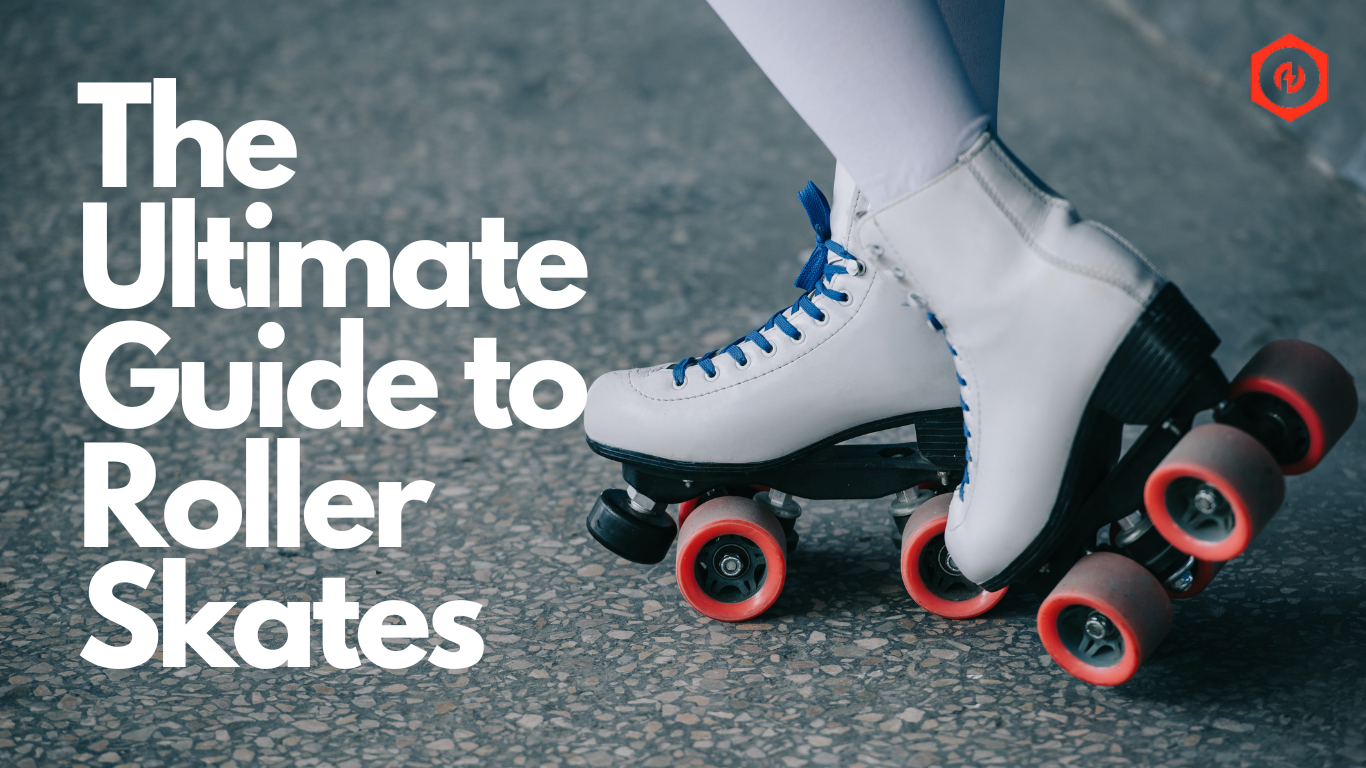History of Roller Skates:
The history of roller skate’s dates back to the 18th century, and they have undergone significant developments and changes over the years. Here is a top-level view of the history of roller skates:
Early Concepts:
The concept of curler skates can be traced back to the early 18th century while inventors started out experimenting with wheeled shoes. The first recorded roller skate design was created by John Joseph Merlin, a Belgian inventor, in the 1760s. Merlin's design featured metal wheels and was intended for use at a masquerade party.
Inline Skates:
In the 1810s, French inventor M. Petitbled patented the first in line skate design, known as "patin à roues alignées." These early inline skates had wooden wheels and were primarily used for artistic and dance purposes.

Marie Prevost on Inline Skates (Source: vintag.es)
Quad Skates:
The 1860s saw the advent of quad curler skates, which featured two pairs of wheels arranged in a side-by way of-side configuration. This layout provided higher balance and manipulate. Quad roller skates gained reputation inside the late 19th century and became a famous leisure hobby. The history of curler skates showcases the evolution of this invention from its early conceptual stages to its numerous bureaucracies and uses in present day times. Roller skating has not only been a fun activity but also a sport with a rich cultural history.

Roller skating friends, England, 1926 (Source: vintag.es)
Types of Roller Skates:
There are several types of roller skates designed for various purposes and activities. Each form of roller skate is adapted to offer particular features and performance traits to match the desires of different skaters. Here are a number of the most common styles of curler skates:
Quad Roller Skates:
Quad curler skates are ready with 4 wheels, inside the front and in the again, arranged in a rectangular sample. They are normally used for leisure skating, inventive skating, and curler derby. Quad skates offer stability and maneuverability, making them perfect for dance and creative exercises.

Visit JTSkate Quad Roller Skate Collections
Inline Skates (Rollerblades):
Inline skates have a single line of wheels arranged in a straight line, resembling a blade. They are commonly used for fitness skating, speed skating, aggressive skating, and hockey. Inline skates offer better speed and efficiency compared to quad skates and are often chosen for athletic activities.

Visit JTSkate Inline Skate Collections
Speed Skates:
- Speed skates, whether quad or inline, are built for maximum speed and efficiency.
- They have longer frames, larger wheels, and low-cut boots to reduce air resistance
Artistic Skates:
- Artistic roller skates, typically quad skates, are designed for figure skating and dance routines.
Derby Skates:
- Derby roller skates are designed for roller derby, a contact sport played on a flat track.
- They feature low-cut boots, responsive plates, and grippy wheels for quick turns and agility on the track.
How to Choose the Perfect Roller Skates:
Choosing the perfect roller skates involves several key considerations:
• Skating Style: Determine your intended skating style, whether it's recreational, speed skating, roller derby, artistic skating, or another discipline, as different skates are designed for specific purposes.
• Skill Level: Assess your skating proficiency. Beginners may benefit from stable and forgiving skates, while advanced skaters might require specialized features.
• Budget: Establish a budget to narrow down options. Roller skate prices can vary significantly, so knowing your spending limit is essential.
• Quad or Inline Skates: Decide between quad roller skates or inline skates (rollerblades) based on your preferred style of skating and comfort.
• Sizing and Fit: Ensure proper sizing by consulting the manufacturer's chart and measuring your feet. Trying on skates whenever possible is essential to find the right fit.
• Wheel Configuration: Pay attention to the wheel arrangement, especially for quad skates. Some configurations are better suited for balance and maneuverability depending on your activity.
• Additional Features: Depending on your chosen activity, consider features like adjustable toe stops, grind plates, or lace-up systems for precise fit adjustment.
• Try Before You Buy: Whenever possible, try on different skates to evaluate comfort and fit. Personal preferences and skating goals should guide your final choice.
By considering these factors, you can select roller skates that match your skill level, preferences, and intended skating style for a more enjoyable and satisfying experience.
Roller Skate Maintenance and Care:
Proper maintenance and care of your roller skates are crucial to ensure they perform well and last longer. Here are essential maintenance tips.
• Regular Cleaning: Clean your skates after each use to remove dirt and debris. Use a damp cloth or sponge for the boot and a small brush for the wheels and bearings.
• Inspect for Damage: Check your skates for signs of wear and tear, such as cracked wheels, loose bolts, or damaged boots. Address any issues promptly to prevent further damage.
• Wheel Rotation: Rotate your wheels periodically to ensure even wear. Swap the front and back wheels or switch the wheels between your left and right skates.
• Lubricate Bearings: Lubricate your skate bearings with appropriate skate oil or lubricant. This maintains smooth wheel rotation. Clean and re-lubricate bearings if they become dirty or noisy.
• Replace Worn Parts: Replace worn-out wheels, bearings, or brake pads as needed. Worn parts can negatively impact your skating experience and safety.
• Brake Maintenance: If your skates have brakes, check them for wear and replace them if necessary. Proper brakes are essential for safety.
• Store Properly: Store your skates in a cool, dry place, away from direct sunlight and extreme temperatures. Use skate guards or covers to protect them.
By following these protection pointers, you may increase the lifespan of your curler skates, make sure higher overall performance, and enjoy a safer and greater comfortable skating revel in.
Roller Skating Safety Tips:
Roller skating can be a fun and active pastime, but safety should always be a top priority.
• Protective Gear: Wear a helmet, wrist guards, knee pads, and elbow pads to safeguard against head injuries and fractures
• Appropriate Footwear: Choose well-fitting roller skates that provide ankle support and a comfortable fit.
• Learn to Stop: Master braking techniques like T-stops and plow stops to control speed and stop safely.
• Observe Traffic Rules: Skate in designated areas, follow traffic signals, and yield to pedestrians.
• Stay Visible: Wear bright or reflective clothing to enhance visibility, especially when skating at dusk or night.
• Practice Falling: Learn how to fall safely to minimize the risk of injury.
• Stay Alert: Avoid distractions and stay aware of your surroundings while skating.
• Skate with a Buddy: Whenever possible, skate with a friend for added safety and assistance in case of emergencies.
Popular Roller-Skating Activities:
Roller skating offers a wide range of activities that cater to different interests and skill levels. Recreational Skating: Casual skating at roller rinks, parks, or trails for fun and exercise. Great for beginners and families.
• Speed Skating: Competitive racing on roller skates, often on oval or flat tracks. Requires advanced skills and specialized skates.
• Roller Derby: A contact sport played on roller skates, involving teams of skaters who compete to score points by lapping opponents. Requires teamwork and strategy.
• Artistic Skating: Focuses on choreographed dance routines, jumps, spins, and figure skating moves. Often performed in roller skating competitions.
• Roller Hockey: Played similarly to ice hockey but on roller skates. Requires specialized gear and skates.
• Roller Dance: Freestyle dancing on roller skates, often performed in roller discos or at social events.
• Jam Skating: A style of roller dancing that focuses on footwork, spins, and moves to music, often in a freestyle environment.
• Roller Fitness Classes: Fitness and exercise classes conducted on roller skates, offering a fun way to stay active.
Choose the curler-skating interest that aligns with your interests and ability level to revel in this flexible and interesting sport.
Conclusion:
In give up, curler skating is a versatile and exciting activity with a wealthy fact and a huge range of patterns and disciplines. The very last manual to roller skates gives precious insights into the sector of roller skating, protecting its history, forms of skates, deciding on the best pair, maintenance pointers, safety suggestions, and famous skating sports. Whether you're a novice seeking to start your roller-skating adventure or an experienced skater in search of to explore new patterns and techniques, this manual from JT Skate gives a complete evaluation that will help you navigate the sector of curler skating. Remember that protection should continually be a concern, and the right system, right maintenance, and adherence to safety policies are vital for a rewarding and harm-loose skating experience.
Roller skating gives now not best a exquisite way to stay lively but also a colorful network of skaters worldwide. So, lace up your skates, discover wonderful patterns, and have a blast rolling on wheels!










